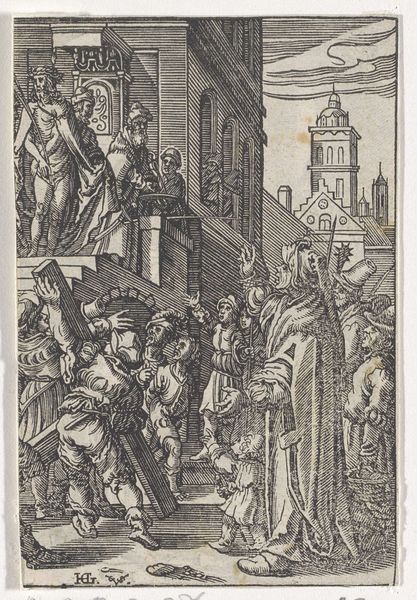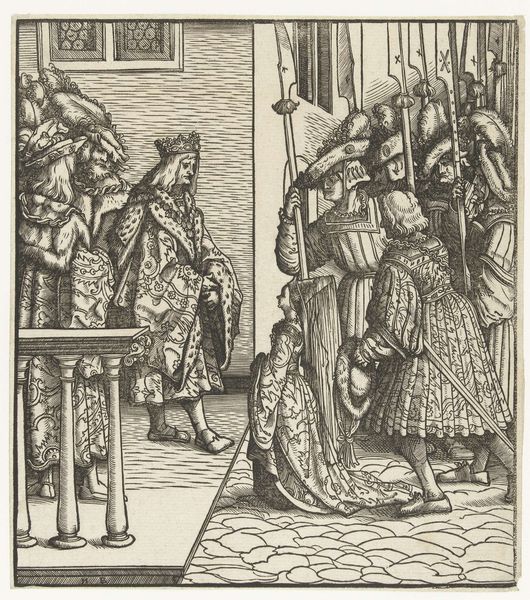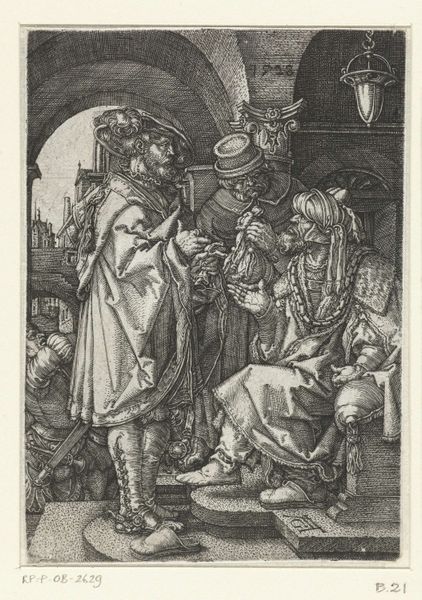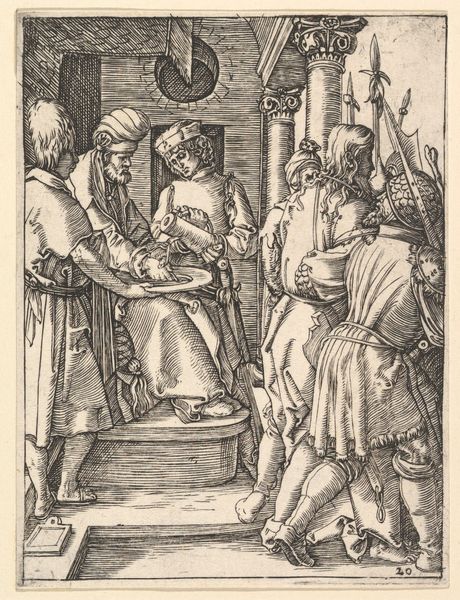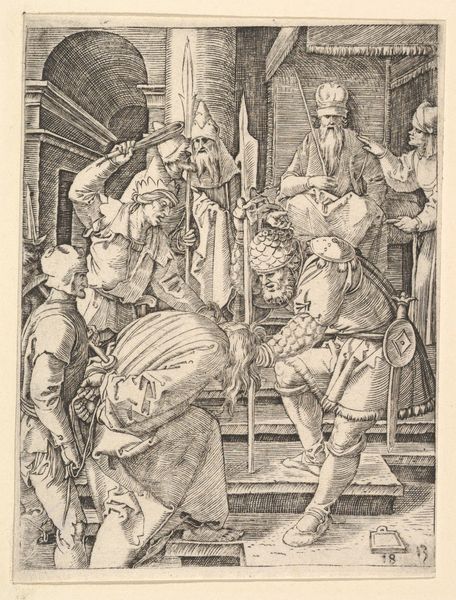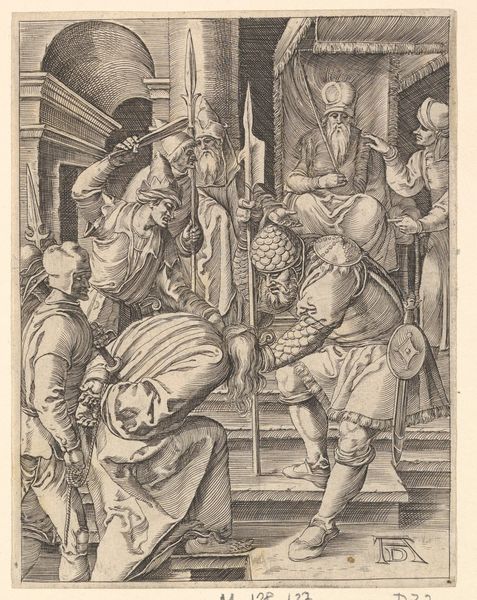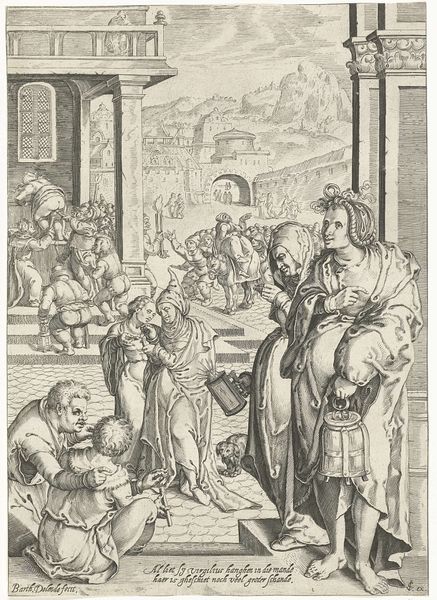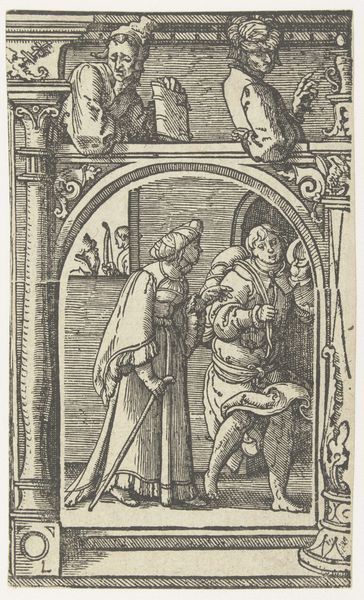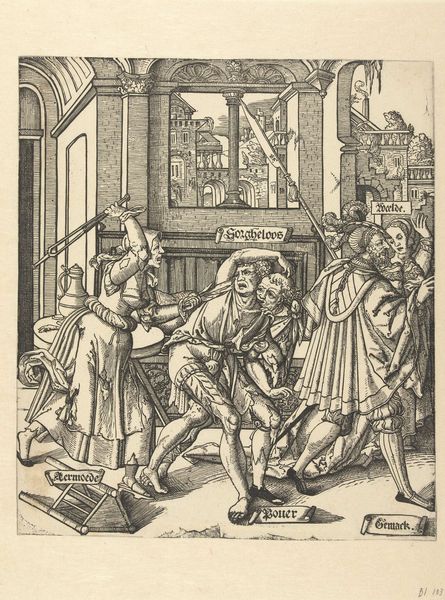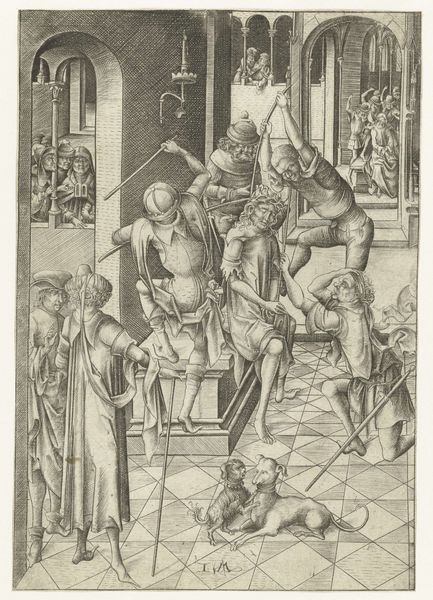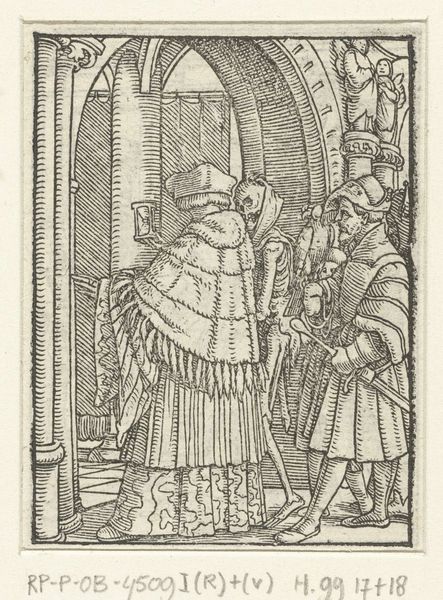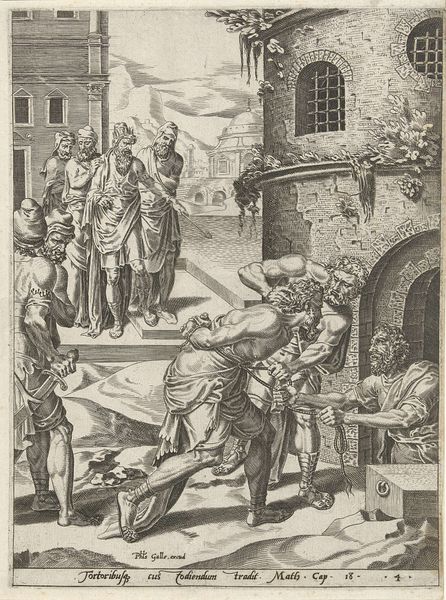
print, engraving
#
pen drawing
# print
#
pen illustration
#
old engraving style
#
caricature
#
figuration
#
pen-ink sketch
#
line
#
genre-painting
#
history-painting
#
northern-renaissance
#
engraving
Dimensions: height 141 mm, width 193 mm
Copyright: Rijks Museum: Open Domain
Editor: Here we have Heinrich Aldegrever's "The wife of Potiphar accuses Joseph," made between 1512 and 1560. It's an engraving, so black lines on a white ground. I find the level of detail and texture quite remarkable for its size, especially the expressive faces. What's your take on it? Curator: Well, engravings like this served a crucial role in disseminating biblical narratives to a wider public. Remember, this was during the Reformation when access to religious texts and images was becoming increasingly politicized. Editor: So it's like a Protestant tool? Curator: It's more complicated than that. While the Reformation spurred the production of such images, the interpretation was still contested. Note how Aldegrever presents Potiphar as a figure of authority, maybe even sympathetic. What impact might these illustrations have on contemporary social dynamics between genders? Editor: It does make me wonder if Aldegrever’s showing sympathy for women, portraying Potiphar’s wife as somewhat villainous or manipulative. It's really different than how stories like this are usually told in visual art of that period. Curator: Exactly. These details allowed artists to subtly engage in debates surrounding social norms. Think about how public these prints were. Everyone had access to the messages and biases found in these easily reproducible items. It gives us some insight into understanding the period's sociopolitical conversations and beliefs. Editor: This makes me think differently about art of the period, not just as aesthetics, but as visual culture engaged in social commentary. Thanks, I really appreciate it. Curator: My pleasure. These kinds of prints remind us that art always functions within, and actively shapes, the public sphere.
Comments
No comments
Be the first to comment and join the conversation on the ultimate creative platform.
